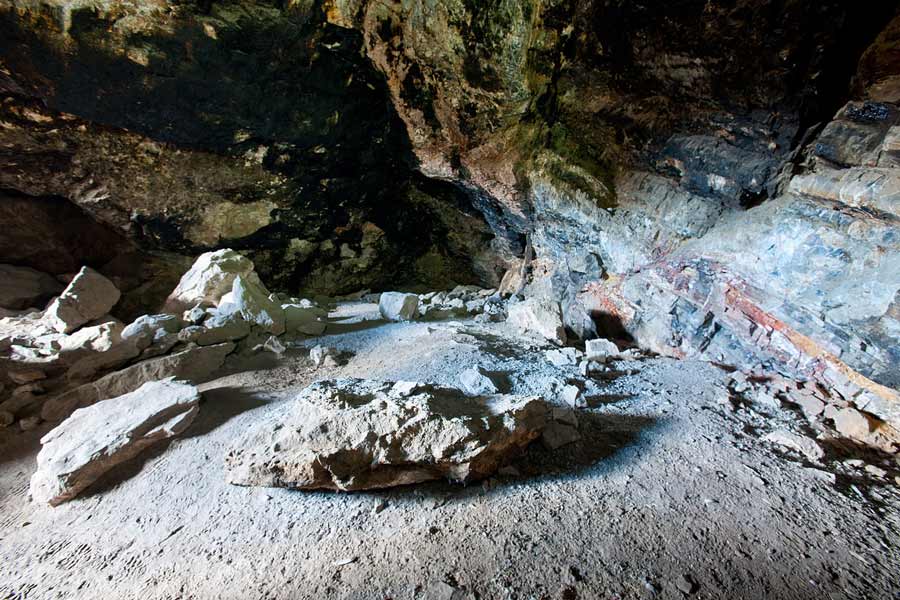The Paiute people, who have called parts of Nevada home for millennia, whisper legends of red-haired giants, known as the Si-Te-Cah, who clashed with their ancestors in a battle for survival. This oral tradition, documented in 1882 by Sarah Winnemucca Hopkins in her book “Life Among the Piutes,” paints a picture of vicious, cannibalistic giants ultimately exterminated by the Paiute at a site now known as Lovelock Cave.
Archaeological discoveries in the early 20th century unearthed thousands of artifacts from the cave, sparking speculation that the legend held truth. Let’s delve into the fascinating story of Lovelock Cave, exploring the Paiute legend, the archaeological finds, and the ongoing debate about the existence of giants.
The Paiute Legend: Si-Te-Cah and the Massacre at Lovelock Cave
Si-Te-Cah, literally translating to “tule-eaters” in the Northern Paiute language, were said to have woven rafts from this fibrous water plant to escape Paiute attacks. Legend depicts them navigating the vast expanse of Lake Lahontan, an ancient lake that once covered much of northern Nevada during the last ice age.

As the narrative unfolds, after years of conflict, the Paiute tribes united to vanquish the Si-Te-Cah. The final battle reportedly led the remaining giants to seek refuge in Lovelock Cave. The Paiute demanded their surrender, but met with refusal, igniting a dramatic confrontation.
In the early 20th century, a series of archaeological excavations were conducted at Lovelock Cave. These excavations revealed that the cave had a long history of human occupation and contained numerous cultural layers.
One of the most significant finds from the excavations was plant material dating back to 2030 BC. This indicates that the cave was inhabited by humans at least 4,000 years ago.
Other important finds included human bones, baskets, tools, and weapons. These artifacts suggest that the people who lived at Lovelock Cave were hunter-gatherers with a sophisticated level of craftsmanship.
The Lovelock Giants
One of the most intriguing stories associated with Lovelock Cave is the legend that it was once inhabited by giants. This legend was passed down through generations by the Paiute Native Americans and was documented in 1882 by Sarah Winnemucca Hopkins in her book “Life Among the Piutes.”

According to the legend, the giants, known as the Si-Te-Cah, were red-haired and savage people. They fought a long war with the Paiutes and were eventually defeated in a battle at Lovelock Cave. The Paiutes set the entrance to the cave on fire, killing the giants inside.
No definitive evidence of giants has been found in the archaeological excavations at Lovelock Cave. However, some researchers point to the large sandals and skulls found in the cave as possible evidence of their existence.
The Debate
The veracity of the legend of the giants at Lovelock Cave is still a matter of debate. Some researchers believe that the legend is true and that the Si-Te-Cah were a real people. Others argue that the legend is simply a myth and that there is no evidence to support the existence of giants.

Lovelock Cave remains one of the most enigmatic sites in human history. The archaeological evidence and the Paiute legend suggest that the cave has a long and complex past. While the existence of giants remains a mystery, Lovelock Cave continues to be an important source of information about ancient human civilizations.
Lovelock Cave Today and Future Research:
Lovelock Cave holds significant importance in several ways:
- Archaeological Treasure Trove: With its layers of cultural artifacts spanning thousands of years, Lovelock Cave serves as a valuable window into the lives of past inhabitants. It allows us to understand their tools, hunting practices, and even diet through analysis of recovered materials.
- Indigenous History: The legends of the Paiute people are intricately woven into the story of Lovelock Cave. Studying the site helps bridge the gap between archaeological evidence and oral traditions, enriching our understanding of indigenous history and cultural beliefs.
- Public Interest: Lovelock Cave draws a steady stream of tourists and researchers, highlighting its enduring fascination. This public interest fuels continued research and preservation efforts, ensuring the site’s legacy remains accessible for future generations.
Looking ahead, the future of Lovelock Cave lies in ongoing research and preservation:
- Advanced Techniques: Utilizing techniques like radiocarbon dating and DNA analysis can offer deeper insights into the age and origin of artifacts, potentially revealing new information about the people who lived there.
- Environmental Reconstruction: Studying pollen, sediment, and other environmental markers can reconstruct past climates and landscapes, providing context for the lives of past inhabitants.
- Community Collaboration: Collaboration with the Paiute tribe is crucial for ensuring respectful interpretation of the site and incorporating their rich oral traditions into the understanding of Lovelock Cave’s history.
Featured Image Credit: BLM Nevada / CC BY-SA 2.0



